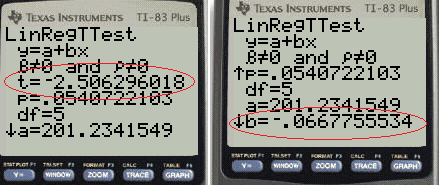

We need to find the z-value before we can find EBP. We can calculate the EBP with the formula: To find the confidence interval, you need the sample proportion, p′, and the EBP. Next, we should check if np′ is greater than 5, so we know we should use this method of finding a confidence interval. P′ =6880=0.85 (sample proportion of successes) We can use the information in the question to define some parameters: The steps for using a calculator are below in the example. *We can also use a calculator to find confidence intervals. So, using the sample proportion as the point estimate, and the EBP as the margin of error, the confidence interval at a confidence level, α, can be written as: The z-scores for the five most common confidence intervals can be found in the portion of the Standard Normal Table below: where zα2 is the z-score that corresponds with the confidence level α, p′ is the estimated proportion of successes, q′ is the estimated proportion of failures, and n is the sample size. The margin of error is the error bound, found with the following formula:

So, when we are trying to estimate the population proportion, the point estimate is the sample proportion, p′. The point estimate is the sample statistic that is used to estimate the population parameter. with the value of (point estimate - margin of error) as the lower value, and the (point estimate + margin of error) as the upper value. (point estimate - margin of error, point estimate + margin of error) We will examine this calculation in detail in the examples below.Ī confidence interval, created for an unknown population proportion, has the form: Once we determine the z-score, we can substitute the values - p′, q′, n, and zα2 - into the formula to calculate the EBP. We then use the Standard Normal Table to find the value that corresponds with zα2=z0.025. So, in order to find the z-value for a certain confidence level, we will use the value for α2.įor example, Let's say we want to find the z-score that corresponds with a 95% confidence level. Since it is split equally, we can write each individual area (in the tails) as α2.

So, α is the (non-shaded) area that is split equally between the two tails. The confidence level is CL=1-α, which is shown by the shaded area in the figure below. We need to find the value of z that puts an area equal to the confidence level (in decimal form) in the middle of the standard normal distribution. Finding the z-score to calculate the EBP will look the same as when we calculate the error bound for means (EBM). However, in the error bound formula, we use p′q′n−−−√, where p′ and q′ are sample proportion estimates of the unknown population proportions p and q. Being able to calculate it will allow you to proceed on sure footing.This error bound formula is similar to the error bound formula for a mean, except that the "appropriate standard deviation" is different.įor a mean, when the population standard deviation is known, the appropriate standard deviation that we use is σn√.įor a proportion, however, the appropriate standard deviation is p′q′n−−−√. You’ve arrived at the total number of people to survey Once you know the percentage from Step 4, you know how many people you need to send the survey to so as to get enough completed responses.As we’ve seen, knowing your margin of error (and all related concepts like sample size and confidence level) is an important part in the balancing act of designing a survey.Look at your past surveys to check what your usual rate is. If you’re sampling a random population, a conservative guess is about 10% to 15% will complete the survey. Calculate your response rate This is the percentage of actual respondents among those who received your survey.And don’t forget that not everyone who receives the survey will respond: Your sample size is the number of completed responses you get. Define the sample size Balancing the confidence level you want to have and the margin of error you find acceptable, your next decision is how many respondents you will need.This means measuring the margin of error and confidence level for your sample. Decide what level of accuracy you’re aiming for You need to decide how much of a risk you’re willing to take that your results will differ from the attitudes of the whole target market.Define your total population This is the entire set of people you want to study with your survey, the 400,000 potential customers from our previous example.


 0 kommentar(er)
0 kommentar(er)
